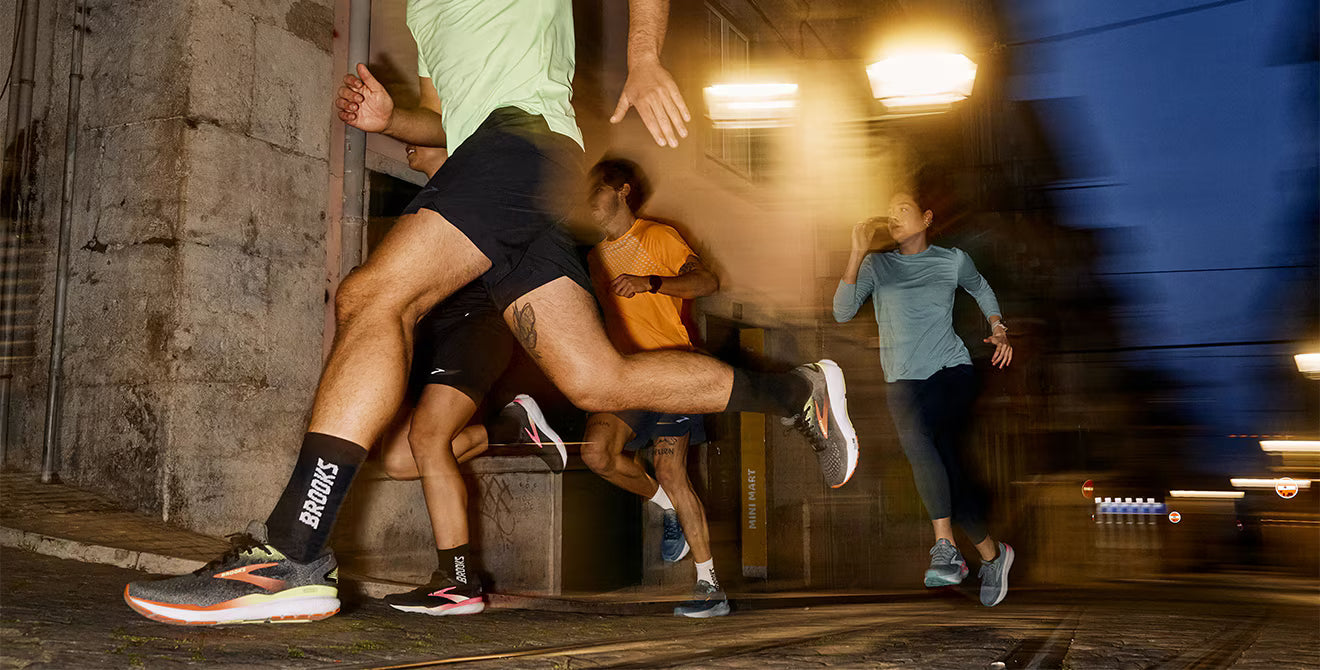How to Choose the Right Running Shoes: A Complete Guide
Whether you're a beginner building up to your first 5K or a seasoned marathoner chasing a personal best, choosing the right running shoes is one of the most important decisions you'll make. The right shoes can help prevent injuries, enhance performance and generally make running a more comfortable experience - while the wrong shoes for you can quickly lead to pain and frustration.
In this guide, we’ll break down how to choose the perfect running shoes for your unique feet, goals, and running style.
1. 🦶 Understand Your Foot Type
Your foot shape and arch play a big role in how your foot moves when you run. Here's how to determine your foot type:
The Wet Test:
-
Wet the bottom of your foot.
-
Step onto a piece of paper or concrete.
-
Look at the imprint.
Flat Arch (Overpronation): Most of the foot shows. You may need stability or motion-control shoes.
Normal Arch (Neutral): A distinct curve is visible. Neutral shoes typically work best.
High Arch (Underpronation/Supination): Only the heel and ball are connected by a thin line. Cushioned shoes with flexibility may be the best option.
Only use this method as a rough guide, you will find more accurate guidance from gait analysis and seeing how your body moves in different types of shoes.
2. 🏃 Consider Your Running Style
Where, how often, and how far you run should influence your shoe choice.
Road Running: Look for lightweight, cushioned shoes with good shock absorption.
Trail Running: Opt for shoes with aggressive tread, stability, and protection from rocks and debris.
Treadmill Running: Road shoes work fine, but focus on comfort and breathability.
3. 👣 Know Your Gait
Gait refers to how your foot moves when you run. Running in shoes that aren't suited to your gait can lead to issues not just with your feet but also knees, hips and back. Many running stores offer gait analysis and this is always the best and most sensible option before buying shoes. These are the different types of gait:
Neutral: Your foot lands evenly. Neutral shoes are best.
Overpronation: Your foot rolls inward too much. Stability or motion-control shoes help.
Underpronation: Your foot doesn't roll in enough. Cushioned, flexible shoes can aid shock absorption.
4. 🔄 Replace Your Shoes Regularly
Even the best shoes wear out. Replace your running shoes every 500-700 miles or sooner if you notice:
- Uneven tread wear
- Loss of cushioning
- New aches and pains after a normal run
5. 🛍 Try Before You Buy (If You Can)
If possible, visit a specialist running store. Try on different brands and models. Here's what to check:
Fit: There should be a thumb’s width of space in the toe box. Most people need to go up half or a whole size from their normal shoe size.
Comfort: No break-in period - good shoes should feel right immediately.
Width: Your foot shouldn’t feel squeezed or slide around.
7. 🧪 Test Different Brands
Different brands fit differently. They all offer neutral and stability but one may suit your running style more than others. Some brands have a slightly narrower fit or come up slightly smaller than others. There are styles that are great for everyday running and others that are designed for speed sessions and races. It's also worth remembering that brands often update their styles and the technical features, so one that's been perfect for you in the past may not be the best shoe now.
Don't buy based on looks alone . Yes, that neon green pair may look great on, but appearance should come last. Focus on the fit and function - your feet will thank you later.
Final Tips:
The ideal time to try shoes on is in the afternoon or evening as your feet swell during the day.
Bring your own socks - ideally the ones you run in.
If you wear orthotics, take them with you when trying on shoes.
👟 Your Perfect Pair Awaits
It's worth taking the time and effort to find the right running shoes as it will make all the difference in your running journey. Listen to your body, do your research, and when in doubt - consult a running shoe expert or podiatrist.
Happy running! 🏃

